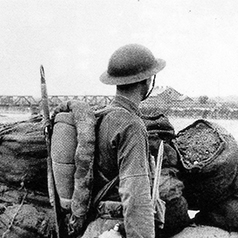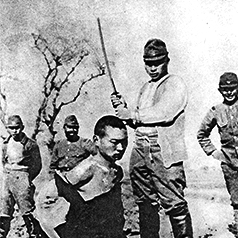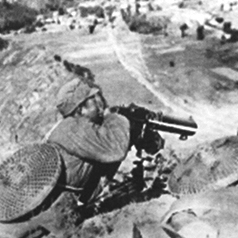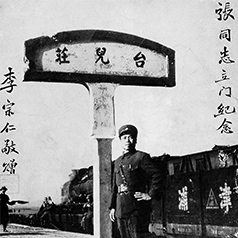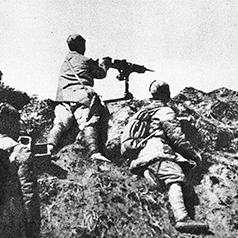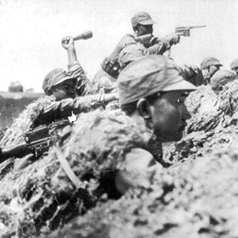
From the Outbreak of China’s Total War of Resistance Against Japanese Aggression to the Eve of the Pacific War: (1937-1941)
From the Outbreak of China’s Total War of Resistance Against Japanese Aggression to the Eve of the Pacific War: an Overview
China’s Total War of Resistance Against Japanese Aggression was sparked off by the Marco Polo Bridge Incident instigated by Japan on 7 July 1937. It lasted eight years (1937-45) and resulted in multiple full-scale battles. Despite of the huge disparity in military equipment and weaponry, the Chinese Army fought valiantly that it crushed Japan’s ambition of “fast-assault and speedy victory”. The two sides were caught in a stalemate on the eve of the Pacific War.
From the Outbreak of China’s Total War of Resistance Against Japanese Aggression to the Eve of the Pacific War: an Overview
China’s Total War of Resistance Against Japanese Aggression was sparked off by the Marco Polo Bridge Incident instigated by Japan on 7 July 1937. It lasted eight years (1937-45) and resulted in multiple full-scale battles. Despite of the huge disparity in military equipment and weaponry, the Chinese Army fought valiantly that it crushed Japan’s ambition of “fast-assault and speedy victory”. The two sides were caught in a stalemate on the eve of the Pacific War.
(1) The Marco Polo Bridge Incident and the Outbreak of the Total War of Resistance Against Japanese Aggression
On 7 July 1937, while conducting military exercises near the Marco Polo Bridge, the Japanese Army demanded to enter Wanping on the pretext of searching for a “missing soldier”. Being rejected, the Japanese Army promptly attacked the city, which became known as the Marco Polo Bridge Incident. It marked the beginning of the Total War of Resistance Against Japanese Aggression.
(2) The Battle of Shanghai
On 13 August 1937, Japan attacked Shanghai and China rose to resist. The three-month-long Battle of Shanghai was the first large-scale confrontation in the Total War of Resistance Against Japanese Aggression.
(3) The Nanjing Massacre
On 13 December 1937, Japan attacked Nanjing and launched a massacre, killing hundreds of thousands of Chinese civilians.
(4) The Battle of Pingxing Pass
In September 1937, the 115th Division of the 8th Route Army led by the Chinese Communist Party ambushed the Japanese forces successfully at the Pingxing Pass in Shanxi Province, earning China its first victory in the Total War of Resistance Against Japanese Aggression.
(5) The Battle of Tai’erzhuang
From March to April 1938, the National Revolutionary Army defeated the Japanese Army at the Battle of Tai’erzhuang. The victory strengthened the determination of the soldiers and civilians nationwide to resist Japanese aggression.
(6) The Battle of Wuhan
On 10 June 1938, Japan attacked Wuhan and China mobilised over a million soldiers to resist. Although Japan won the battle, it failed to realise its ambition of “fast-assault and speedy victory” on China.
(7) The Hundred Regiments Offensive
In the fall and winter of 1940, the 8th Route Army led by the Chinese Communist Party conducted a large-scale campaign against Japan in the enemy’s rear area in North China. The campaign mobilised 105 regiments in total, which became known as the “Hundred Regiments Offensive”.
(8) The First and Second Battles of Changsha
In 1939 and 1941, Japan attacked Changsha twice, the capital city of Hunan Province in 1939 and 1941. However, both attempts were defeated by the National Revolutionary Army led by Xue Yue.




